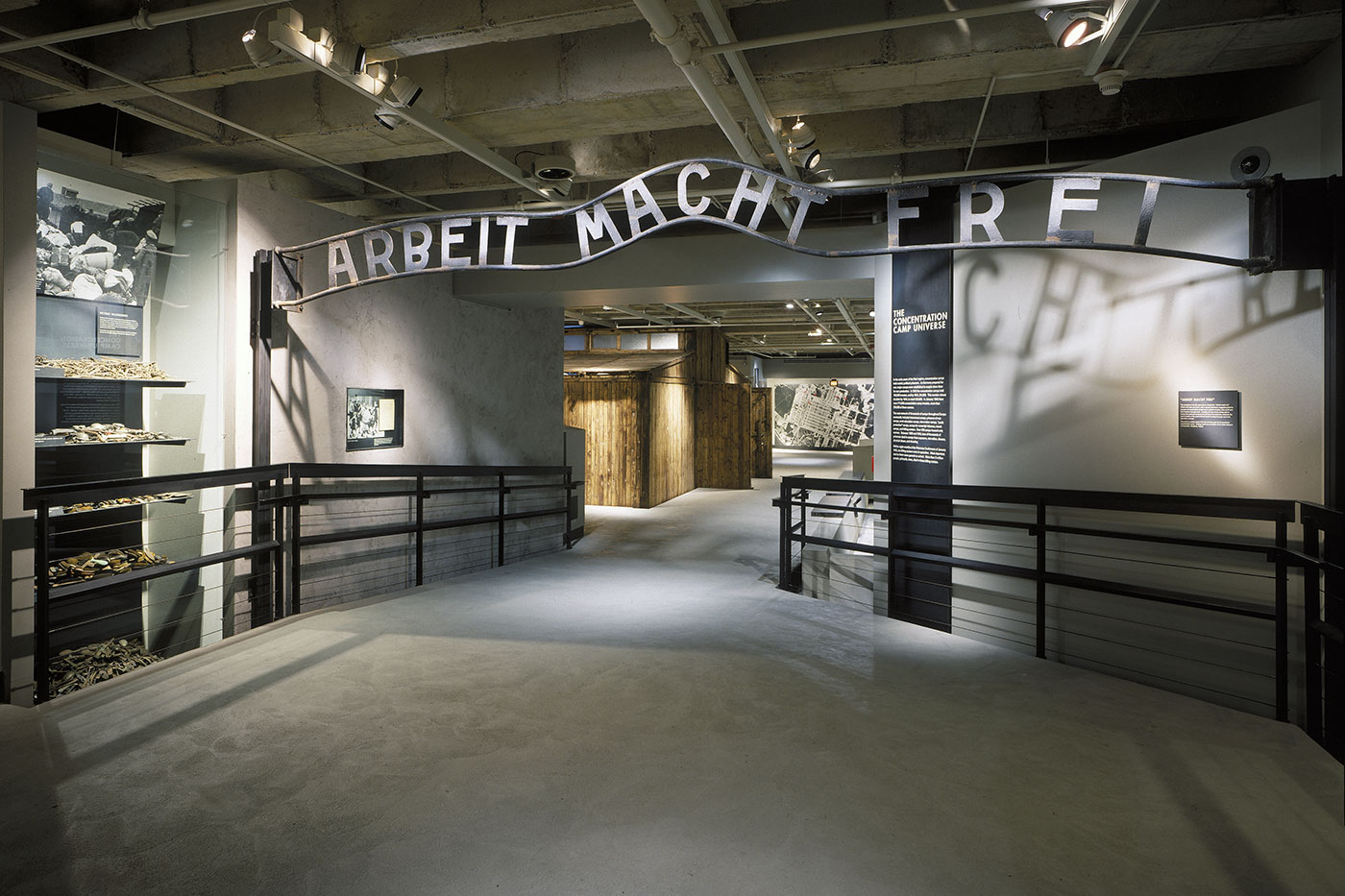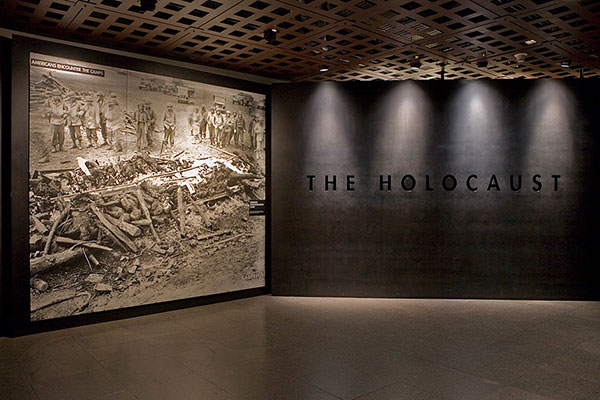The middle floor of the Permanent Exhibition examines the wartime evolution of Nazi policy towards the Jews, from persecution to mass murder. As Germany expanded its territory across Europe, Nazi officials segregated Europe’s Jews from the rest of the population through laws, special markings, and relocation to ghettos.
In 1941, with the invasion of the Soviet Union, Germany embarked on the path of genocide, the physical annihilation of an entire people—which the Nazis euphemistically termed the “Final Solution of the Jewish Question.” When World War II ended in 1945, the Nazis and their collaborators had killed some six million Jews in Europe, representing two-thirds of the Jewish population in prewar Europe. An audio theater on this floor presents the testimony of Holocaust survivors in Voices of Auschwitz.
A major focus of this floor is the world of the concentration camp, which rapidly expanded in the 1940s. The Nazis established thousands of camps, holding hundreds of thousands of inmates—Jews, Soviet prisoners of war, Poles, political prisoners, Jehovah’s Witnesses, Roma (Gypsies), homosexuals, and others—who were subject to dehumanizing treatment, forced labor, and death. Jewish experience in the ghettos and camps, as well as in hiding, is covered on this floor of the exhibition. Highlights include efforts to preserve the evidence of Jewish life under Nazi rule, armed resistance in the Warsaw ghetto uprising, and the legacy of Anne Frank.


